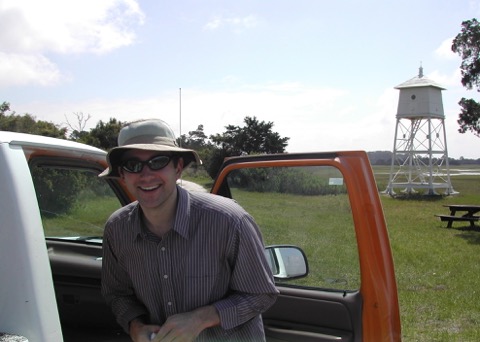students
Ups, Downs.
20/06/17 10:15
I'm back from my travels to Friday Harbor Laboratories - my zoologist "home base" since 1996, though only my 6th stay at the labs. The original intent of the trip was a micro-sabbatical (UGA does not have real sabbaticals, unless you find external funding for it) to write, prepare for teaching in the fall, and put my feet amidst the Fucus and Balanus again at low tide, in a habitat I know less well than I'd like but better than almost any other.
My plans were interrupted. First, by good news - my work on Pisaster is recommended for NSF funding along with colleagues Mike Dawson, Lauren Schiebelhut, Ian Hewson, and Pete Raimondi. Fantastic news that required some scrambling to address a few issues before anything could be finalized, and of course made trickier by me not being at my office. So, good news for sure and you'll hear more about that in the coming few years.
Then, the very next day (still in my first week at the labs), terrible news. One of the most incredible undergraduate students I've yet interacted with, Katelyn Chandler, passed away unexpectedly. She was only 20. I worked with her first as a teacher in my "Monsters" class, and then for 3 semesters in the lab where she learned how to do qPCR, genotyping sea stars, and eventually her Honors thesis on differential expression among EF1A genotypes of Pisaster. She was incredibly intelligent, engaging, diligent, and creative, and will be very much missed by all of us in the Wares lab.
Below is a photo I took of her presenting the poster she made with almost no help (in terms of design, content, and so on), discussing science that she had done much of the creative and intellectual work on.
Katelyn will receive a posthumous degree from the University of Georgia; in only 2 years at UGA she had already amassed tremendous number of credits, had completed her Honors thesis, had coauthored a scientific publication, and had touched the lives of very many.
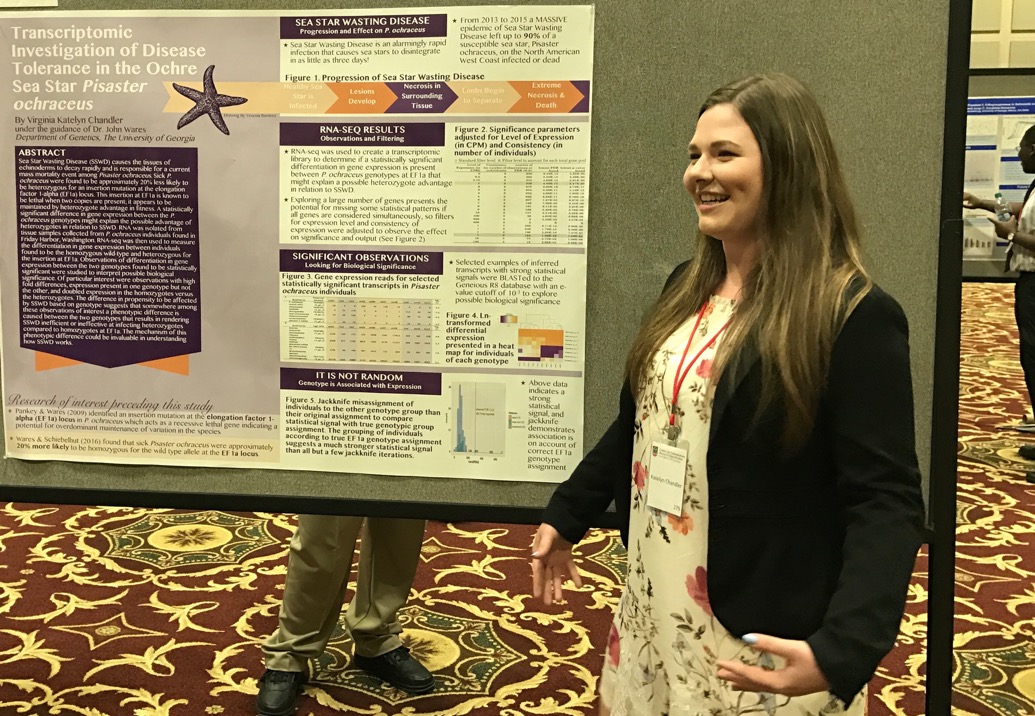
My plans were interrupted. First, by good news - my work on Pisaster is recommended for NSF funding along with colleagues Mike Dawson, Lauren Schiebelhut, Ian Hewson, and Pete Raimondi. Fantastic news that required some scrambling to address a few issues before anything could be finalized, and of course made trickier by me not being at my office. So, good news for sure and you'll hear more about that in the coming few years.
Then, the very next day (still in my first week at the labs), terrible news. One of the most incredible undergraduate students I've yet interacted with, Katelyn Chandler, passed away unexpectedly. She was only 20. I worked with her first as a teacher in my "Monsters" class, and then for 3 semesters in the lab where she learned how to do qPCR, genotyping sea stars, and eventually her Honors thesis on differential expression among EF1A genotypes of Pisaster. She was incredibly intelligent, engaging, diligent, and creative, and will be very much missed by all of us in the Wares lab.
Below is a photo I took of her presenting the poster she made with almost no help (in terms of design, content, and so on), discussing science that she had done much of the creative and intellectual work on.
Katelyn will receive a posthumous degree from the University of Georgia; in only 2 years at UGA she had already amassed tremendous number of credits, had completed her Honors thesis, had coauthored a scientific publication, and had touched the lives of very many.

Fecundity 5
24/04/13 12:19
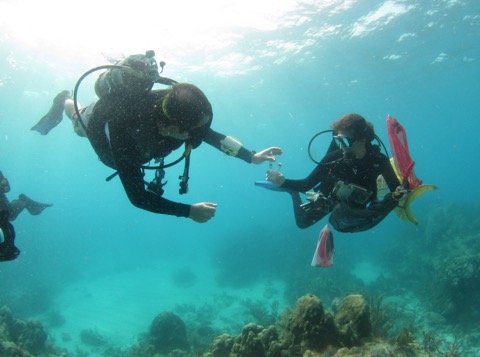
Hard-working Ecology graduate student Meredith Meyers became the fifth Ph.D. to finish up work in my lab. Jim Porter and I co-advised Meredith, meaning she covered a huge breadth of knowledge from coral reef monitoring to barnacle speciation in her time here. She already has two papers out from her time in my lab and another one or two to come. Congratulations Meredith!
More Shouts
19/10/12 09:39
It’s been a good week for the Wares Lab. Christine Ewers passed her oral examinations on Tuesday and is now a Ph.D. candidate; her fortune came through wildly the next day when she found out that - having entered one of the numerous drawings that they hold at product shows - she won an $8000ish ABI thermal cycler! We haven’t figured out the details on this prize yet but obviously a pretty exciting win.
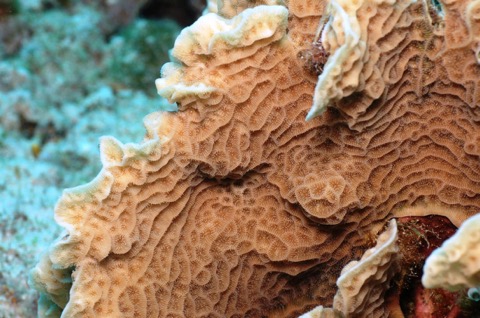
Also, doctoral student Meredith Meyers just (probably) landed her second publication in the last two months as she just got word from Journal of Heredity that only very minor revisions are necessary for her paper on fluorescent protein sequence evolution in the coral genus Agaricia. This is exciting not just because it is a publication, but this was the most technically punishing paper that she and I have had to work on and it touches on the boundaries of what we know as molecular evolution folk. When there are multiple copies of a gene in a group of organisms (and I suppose it is also possible that those species are hybridizing!), that means that the variation that is present in what we can survey represents allelic variation at a locus, the divergence of gene copies, and the divergence of gene copies in different species. Unfortunately, it is very difficult to tell where to draw the lines between these different ‘containers’ of diversity, but Meredith did a very good job examining the problem and I’ll post publication details when they are available.
Finally, long-time Wares Lab associate Jamie Winternitz (Altizer Lab, Odum School of Ecology) defends her dissertation today. Fantastic, difficult work on the interaction of immune system evolution and parasite load in montane voles. Looking forward to hoisting a beer in her honor later today.
You should be nervous for us. Please note the number of chickens I’ve counted before they’ve hatched in this post!

Also, doctoral student Meredith Meyers just (probably) landed her second publication in the last two months as she just got word from Journal of Heredity that only very minor revisions are necessary for her paper on fluorescent protein sequence evolution in the coral genus Agaricia. This is exciting not just because it is a publication, but this was the most technically punishing paper that she and I have had to work on and it touches on the boundaries of what we know as molecular evolution folk. When there are multiple copies of a gene in a group of organisms (and I suppose it is also possible that those species are hybridizing!), that means that the variation that is present in what we can survey represents allelic variation at a locus, the divergence of gene copies, and the divergence of gene copies in different species. Unfortunately, it is very difficult to tell where to draw the lines between these different ‘containers’ of diversity, but Meredith did a very good job examining the problem and I’ll post publication details when they are available.
Finally, long-time Wares Lab associate Jamie Winternitz (Altizer Lab, Odum School of Ecology) defends her dissertation today. Fantastic, difficult work on the interaction of immune system evolution and parasite load in montane voles. Looking forward to hoisting a beer in her honor later today.
You should be nervous for us. Please note the number of chickens I’ve counted before they’ve hatched in this post!
Squids and Japanese
15/10/12 11:51
I just have to give a shout-out to former Wares lab technician and all-around awesome young scientist Sabrina Pankey, because her website tells it all - in both English and Japanese (which she has learned in recent years).
New Year
17/01/12 12:08
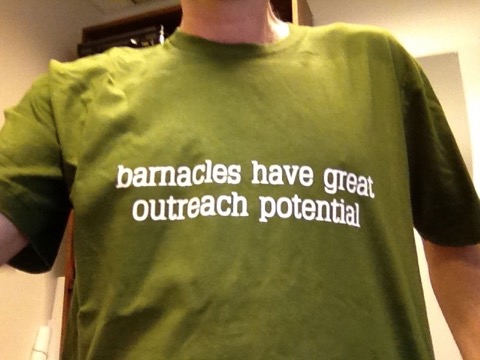
To add to the pantheon of great Nerd Shirts out there, we made these T-shirts for the SICB meeting in Charleston, SC which I attended the first weekend of January, along with Christina Zakas and Christine Ewers from my lab. Presumably, this was only funny to the 12 or so members of the symposium I spoke at, but if you understand this: you are also a nerd.
As always, much going on. The RAD-tagged data are back for Notochthamalus, and Christina is working on interpreting these data (hopefully before I give a talk on this project in early March at Auburn!). We also now have specimens of Notochthamalus from Ushuaia, the southernmost city on the planet - no matter what answer their DNA barcodes give up, it will be an interesting one.
We are also pleased to be hosting César Ribeiro, from the Universidade de Aveiro in Portugal. He is a doctoral student with a background in biochemistry and physical modeling, working on the physical oceanography of the Macaronesian Islands and how the oceanography mates with population genetic data. This is not an easy problem, and very similar to what we are trying to do on the east coast of the US and the coast of Chile.
Fecundity 4
18/11/11 09:30
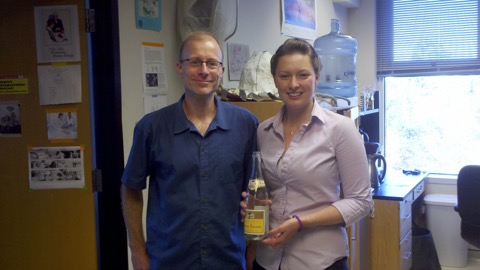
That’s Dr. Zakas next to me, successfully defended - in fact, she did such a good job on her dissertation I think the committee would have preferred to skip the defense and just head for the pub. Congratulations Christina!
Christina is going to be helping me in the coming months wrap up some analyses on the RAD-tagged data for Notochthamalus. I have to say right now I’m a little disappointed with the whole Nex-gen world, for the third time in as many attempts at getting 454 or Illumina data a huge portion of the data came back as junk (this time apparently a bubble in the line). I guess it will take a while for all the kinks to get worked out of these systems, and by then they’ll have invented something new!
Leaving!
29/08/11 10:58
Well, today ended up being the day that John Robinson and Ron Eytan left the lab, both going on to new postdoctoral experiences. I know we are going to get a lot of papers out together, and I will definitely miss the regular exchanges of ideas (and occasionally bourbon) with these two!
John is heading on to a postdoc with Greg Moyer at the USFW facility in Warm Springs, GA.... as best as I understand this will be meta-analytical work on genetic patterns in the southeast, something that John - with his statistical and computational abilities in R and other environments - is very well suited to. Ron is going to continue working on our Serratia genomes while up at Yale working with Tom Near on big fish phylogenies - lots of fish, lots of genes, tons of data, again something ideal for his talents and interests. Good luck to both of you, and hope to see some manuscripts from you soon :)
John is heading on to a postdoc with Greg Moyer at the USFW facility in Warm Springs, GA.... as best as I understand this will be meta-analytical work on genetic patterns in the southeast, something that John - with his statistical and computational abilities in R and other environments - is very well suited to. Ron is going to continue working on our Serratia genomes while up at Yale working with Tom Near on big fish phylogenies - lots of fish, lots of genes, tons of data, again something ideal for his talents and interests. Good luck to both of you, and hope to see some manuscripts from you soon :)
Outreach 2
03/05/11 11:38
Wow. Today I went to Fowler Drive Elementary and met with the 4th graders, after being invited by teacher Frannie Gay. I brought some slides to show on my iPad (today’s fourth-grade classrooms are SO cool compared to the dreary situation I went through 30 years ago; they have integrated LCD projectors with a projection screen that doubles as touch-pad) and the kids must have asked me 100 questions about corals, sharks, bacteria, washing hands, Finding Nemo, and dirty water. Mission accomplished.
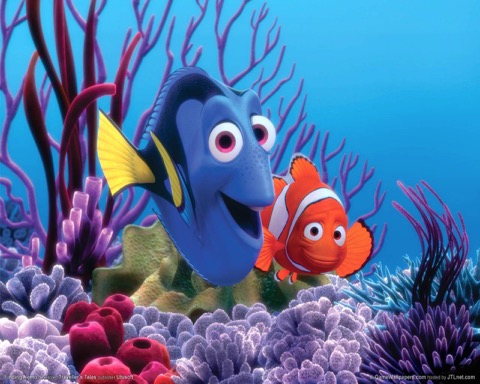
Faculty from UGA do this each spring as part of our “LemonAid” program, started a couple years ago when we were being furloughed thanks to lousy budgets. When life gives you lemons, get it? So on furlough days faculty would go to local schools; this year, no furloughs but it seems a good tradition to keep up. And, it gives me one of those extremely rare opportunities to not just claim to be a marine biologist, but actually feel like I’m doing something that might change something for the better on this world. Maybe one of those kids will get the overall message about clean water and take it to heart.

Faculty from UGA do this each spring as part of our “LemonAid” program, started a couple years ago when we were being furloughed thanks to lousy budgets. When life gives you lemons, get it? So on furlough days faculty would go to local schools; this year, no furloughs but it seems a good tradition to keep up. And, it gives me one of those extremely rare opportunities to not just claim to be a marine biologist, but actually feel like I’m doing something that might change something for the better on this world. Maybe one of those kids will get the overall message about clean water and take it to heart.
Fecundity 3
01/04/11 11:38
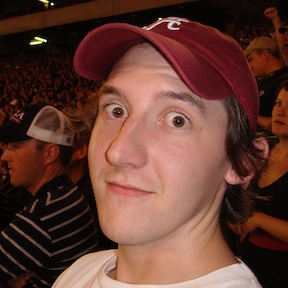
Congratulations to Dr. John Robinson, who just finished the easiest Ph.D. defense I’ve yet seen. John came to my lab just less than 5 years ago, and has been a phenomenal addition to our little population here on the third floor and the department as a whole. I won’t, however, miss feeding his Daphnia lines.
This is just a short note between meetings, as we have our final spring faculty meeting in about 15 minutes. I’ve also come to the sad conclusion that BigDyes sequencing reagents do in fact age in the freezer. As my old funding wrapped up and my new funded projects began, I had two full tubes of BigDyes in the freezer, enough to keep us going for a few months - and some new students working on sequencing projects. As the data came back and weren’t very pretty, I thought it might be novice errors, but this week has finally proven that it is time to toss $1800 worth of reagents into the trash.
Baby It's Cold Outside
13/12/10 09:17
We woke in Athens to -6°C and winds, which made me really appreciate my building more than usual by the time I arrived after the 10 minute bike ride to get here. Figured it was time I updated before the semester is completely gone. Our lab did make it out to celebrate the end of a pretty good semester, we all (well, almost all, there was a final the next day...) headed to Trappeze to warm our insides and toast to our shared dislike of leafblowers. Most of all, it is good to have a lab full of people who get along and keep their heads, and maintain their enthusiasm in sweet and hard times about their passion for science. It was kind of a rough week in that regard, we had all together three papers rejected in recent days (but one accepted). The other papers will find the light soon enough.
Speaking of papers that need to find the light, I offer the following linked manuscript up to the science gods. This is a short paper that was orphaned from my dissertation, and this summer I challenged myself to write a manuscript on these data in one day. I actually took two, or parts of two, days knowing that it was only a tiny descriptive study of a limpet and perhaps no more interesting than the Genbank numbers contained within, but I guess I hope the data will be useful to somebody who is starting their graduate work and is considering work on Tectura testudinalis. David Reid is a wonderful colleague who I met at the CORONA meetings, and he was kind in his rejection, so I’m going to put this one into a web bottle and cast it to sea.
Wares_Tectura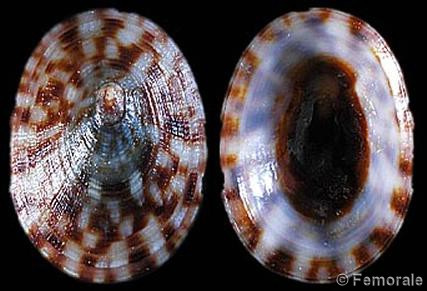
The paper isn’t wrong, just insufficient. But the limpets are nice, so good luck little paper.
Our final news for the lab would be that we managed to earn three awards at the Genetics Department holiday party, I can’t remember which categories Christine’s entries were in but the vegan chickpea-spinach Indian-style dish I made got a blue ribbon in the vegetarian category, I’ll be sure to dogear that page in my cookbook!
Also if you are looking for entertaining reads on evolution and/or bees, check out the work of Jay Hosler (an image is on the “Invert Comics” page), a biologist who has combined his knowledge and skills as a cartoonist to generate some pretty interesting outreach.
Speaking of papers that need to find the light, I offer the following linked manuscript up to the science gods. This is a short paper that was orphaned from my dissertation, and this summer I challenged myself to write a manuscript on these data in one day. I actually took two, or parts of two, days knowing that it was only a tiny descriptive study of a limpet and perhaps no more interesting than the Genbank numbers contained within, but I guess I hope the data will be useful to somebody who is starting their graduate work and is considering work on Tectura testudinalis. David Reid is a wonderful colleague who I met at the CORONA meetings, and he was kind in his rejection, so I’m going to put this one into a web bottle and cast it to sea.
Wares_Tectura

The paper isn’t wrong, just insufficient. But the limpets are nice, so good luck little paper.
Our final news for the lab would be that we managed to earn three awards at the Genetics Department holiday party, I can’t remember which categories Christine’s entries were in but the vegan chickpea-spinach Indian-style dish I made got a blue ribbon in the vegetarian category, I’ll be sure to dogear that page in my cookbook!
Also if you are looking for entertaining reads on evolution and/or bees, check out the work of Jay Hosler (an image is on the “Invert Comics” page), a biologist who has combined his knowledge and skills as a cartoonist to generate some pretty interesting outreach.
Up-and-comers
13/09/10 09:24
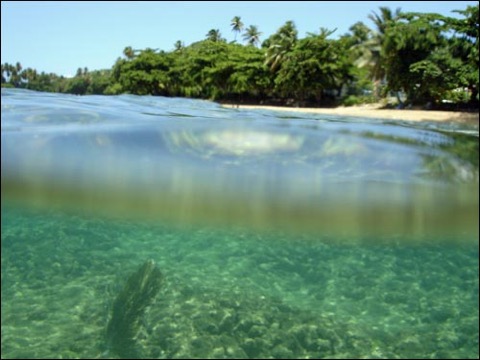
The image above is from Iliana Baums’ lab - one of several working on the imperiled elkhorn coral, Acropora palmata (and really, most of the rest of us are following the lead of Iliana and her students!). This picture was taken in Puerto Rico, and I snagged it from the web to commemorate another addition to the fleet of researchers working on these corals. SUNFIG student Jesyka Meléndez, who spent the summer of 2009 in my lab learning molecular techniques and exploring a metapopulation (or at least thats what we’re calling it for now) of Melampus bidentatus on the Georgia coast, is from the University of Puerto Rico - Cayey. She did a great job in my lab as a freshman, and has now been awarded an EPA fellowship to study pollution and sedimentation on Acropora reefs in Puerto Rico. It’s actually way more fun to see what young enthusiastic people can do, and want to do, than to track my aging colleagues and their publications.
For that matter, here is a 16 year old who has done a high school research project that is essentially our big EID project on a severe budget. It blows my mind what students have access to now, compared to the things we were stuck with when I was in high school (and I’m not that old). You can do comparative (or human) anatomy on an iPad now, you can easily do PCR and electrophoresis in a high school lab, basically kids have the opportunity to do and see anything now. It blows my mind, especially with imagining what my almost-4-year-old will be doing in the next 20 years!
Epistemology
17/08/10 16:31
Almost 20 years ago (gasp!), I took a course in history and philosophy of science. At the University of Oklahoma, there is in fact an extremely strong program in this field thanks largely to the DeGolyer collections, a large contribution of important works in this field. I found it a fascinating branch of my interest in science, and though that isn’t exactly what I ended up doing it is always fun to come across scientists who also like delving into the how-we-know-what-we-know. Massimo Pigliucci has made the conversion from biologist to philosopher, for example, and has a blog that often discusses the fertile ground between the two fields.
We (the Genetics department, more specifically Brian Condie and myself) are teaching a new course this year for our incoming graduate students that will be playing around with this theme as well. It is called “Problems in Genetics” but the goal is not to learn the latest in quantitave PCR approaches, but to learn more about how good questions are asked, and why. We’ve started the semester off with a chapter from E.O. Wilson’s Consilience, and it may have been a big surprise to the students to be reading something like this in a Genetics class but I hope this pays off. We really want to break our new students of some of the habits that undergrad scientists get into. They need to become skeptical of the literature while understanding its value; they need to understand how to develop questions themselves; and they need to understand the conceptual breadth of our field, and how it attaches to other fields like ecology and biochemistry.
We’ll be revisiting old experiments and how they guide us today; discussing what models are, and the value of both conceptual and mathematical approaches. Most of all, we want to finally squash the lack of understanding that affects almost every academic department, the narrowness that leads to disdain for compatriots simply because they aren’t studying something so directly tied to what we are doing. Put simply, we want a student to understand why somebody is asking the question and using the methods, even if that student doesn’t care to ask that question or use that method themselves.
Wish us luck. Welcome to the new school year.
We (the Genetics department, more specifically Brian Condie and myself) are teaching a new course this year for our incoming graduate students that will be playing around with this theme as well. It is called “Problems in Genetics” but the goal is not to learn the latest in quantitave PCR approaches, but to learn more about how good questions are asked, and why. We’ve started the semester off with a chapter from E.O. Wilson’s Consilience, and it may have been a big surprise to the students to be reading something like this in a Genetics class but I hope this pays off. We really want to break our new students of some of the habits that undergrad scientists get into. They need to become skeptical of the literature while understanding its value; they need to understand how to develop questions themselves; and they need to understand the conceptual breadth of our field, and how it attaches to other fields like ecology and biochemistry.
We’ll be revisiting old experiments and how they guide us today; discussing what models are, and the value of both conceptual and mathematical approaches. Most of all, we want to finally squash the lack of understanding that affects almost every academic department, the narrowness that leads to disdain for compatriots simply because they aren’t studying something so directly tied to what we are doing. Put simply, we want a student to understand why somebody is asking the question and using the methods, even if that student doesn’t care to ask that question or use that method themselves.
Wish us luck. Welcome to the new school year.
Portland
07/07/10 10:15
Just got back from a fantastic trip to Oregon. My lab attended the Evolution meetings in Portland, everybody gave a fantastic talk and we had really good interactions with the swarm of evolution geeks that, like good social organisms, found and followed trails to good brewpubs, restaurants, and other fun things in that beautiful city. Afterward, my family and I had a great time touring the city and heading out to the coast for a few days of R & R.
The only conundrum that remains from great meetings like this - aside from how to respond to all the great ideas that come from talking to so many talented colleagues - is the ugly environmental side of meetings. The organizers in Portland went to lengths to put us somewhere that required no driving, they encouraged bringing reusable cups, and Portland is an extremely green city. But the carbon footprint of flight cannot be ignored. There is no replacement for face-to-face interactions at these meetings; in particular, I’m thinking of some of the extraordinary grad students I talked with over the course of three days about their work and their future plans. But, we can’t ignore the impact of air travel, which sadly negates many of the things we struggle towards with our reusable cups, cycling to work, and unplugging unused appliances. The figure below was taken from a recent story in Mother Jones, and makes me queasy about the 2 flights I’ve already committed to later in 2010, and probably another 1-2 in the next year.
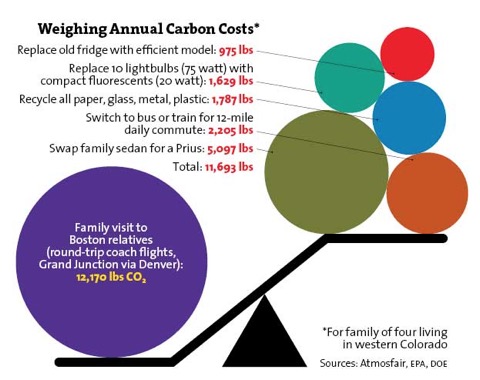
What I am going to do is something that is good for me and my family as well as for the environment. I don’t like being away too much - sometimes it is necessary, but sometimes as scientists we accept invitations to do things that mean little for our work (and more for our egos or careers). If Steve X invites me to give a talk at Fantastic University, it may be flattering and I may gain professionally, but it is not generally critical for my life or my ongoing projects. So, I’m capping myself to 4 air trips a year. That may be tough. I may have to drive to some places I ordinarily would fly to, or figure out Amtrak in the southeastern U.S. (it isn’t good, we are far behind Europe and California in this regard, look at this schedule and price for a trip to Miami!).
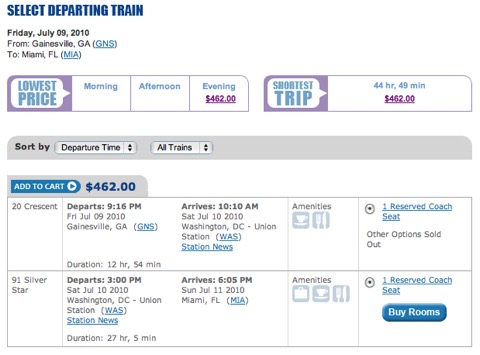
I hope my colleagues understand, but having this excuse is also good for making sure I’m home with my family just a little bit more as well.
The only conundrum that remains from great meetings like this - aside from how to respond to all the great ideas that come from talking to so many talented colleagues - is the ugly environmental side of meetings. The organizers in Portland went to lengths to put us somewhere that required no driving, they encouraged bringing reusable cups, and Portland is an extremely green city. But the carbon footprint of flight cannot be ignored. There is no replacement for face-to-face interactions at these meetings; in particular, I’m thinking of some of the extraordinary grad students I talked with over the course of three days about their work and their future plans. But, we can’t ignore the impact of air travel, which sadly negates many of the things we struggle towards with our reusable cups, cycling to work, and unplugging unused appliances. The figure below was taken from a recent story in Mother Jones, and makes me queasy about the 2 flights I’ve already committed to later in 2010, and probably another 1-2 in the next year.

What I am going to do is something that is good for me and my family as well as for the environment. I don’t like being away too much - sometimes it is necessary, but sometimes as scientists we accept invitations to do things that mean little for our work (and more for our egos or careers). If Steve X invites me to give a talk at Fantastic University, it may be flattering and I may gain professionally, but it is not generally critical for my life or my ongoing projects. So, I’m capping myself to 4 air trips a year. That may be tough. I may have to drive to some places I ordinarily would fly to, or figure out Amtrak in the southeastern U.S. (it isn’t good, we are far behind Europe and California in this regard, look at this schedule and price for a trip to Miami!).

I hope my colleagues understand, but having this excuse is also good for making sure I’m home with my family just a little bit more as well.
Busy February
11/02/10 09:02
Well, in the last month we’ve had at least 3 waves of graduate recruits - for our Interdisciplinary Life Sciences program, the Genetics department, and the School of Ecology - so it has been busy. For those of you who visited, it was great meeting all of you. Strange as it may seem, it is the newest graduate students that make this job easy. You folks bring the enthusiasm and (sometimes crazy) ideas, and we get the chance to work with new people all the time. Of course that means that we have a lot of great students who leave Athens, too, and that’s a bummer, but part of the job. We also got some good news in that an NSF proposal with Jeb Byers and Jamie Pringle is up near the top for funding...I might even have to “friend” NSF on Facebook if they fund us. Right now I’m finishing another NSF proposal, and have finished teaching the Life History/Molecular Pop Gen section of our core evolution course for graduate students, and next week I’ll be traveling to give a talk at UNC-Asheville (also a good excuse to take my mountain bike to the snow-dusted mountains up north!). So, yeah, it has been busy.
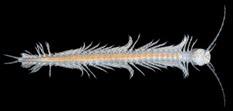
But today I actually wanted to give props to my Ph.D. advisor, I left his lab 10 years ago now. It has been a good week or two for Cliff Cunningham, with notable mentions in Science for the collaborative work he has done with Scott France and others on the origins of deep sea corals, and now in Discover magazine where his work to help determine the true phylogeny and ancestral relationships of the arthropods has made big waves! The picture of the xenocarid above represents the closest living relative to the Hexapoda, including insects - so we’re talking about a deep relationship here, appropriate since these blind creatures are found in caves....

But today I actually wanted to give props to my Ph.D. advisor, I left his lab 10 years ago now. It has been a good week or two for Cliff Cunningham, with notable mentions in Science for the collaborative work he has done with Scott France and others on the origins of deep sea corals, and now in Discover magazine where his work to help determine the true phylogeny and ancestral relationships of the arthropods has made big waves! The picture of the xenocarid above represents the closest living relative to the Hexapoda, including insects - so we’re talking about a deep relationship here, appropriate since these blind creatures are found in caves....
Honors Students
04/01/10 16:42
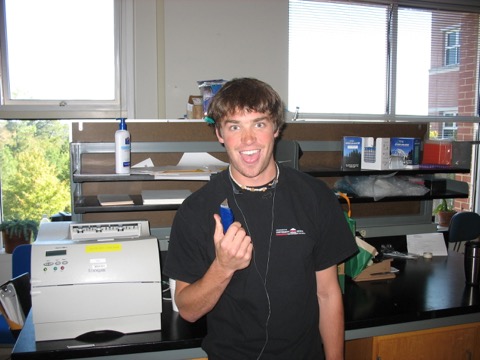
Oh, the people we deal with in this line of work. There are days when it can drive you nuts - politics, broken temp-control rooms, paperwork - but the students keep me on my toes in a lot of good ways. For New Year’s Eve I got to catch up with one of my former Honors students, John Binford. Currently a med student at Yale, budding proprietor of a pedicab business and a microbrewery, taking sanctioned sabbaticals to the Dominican Republic to work on nutrition improvement projects with the people. It is always amazing to soak in the energy that our best students bring to the table. Another of my former Honors undergrads is working on her Ph.D. now in entomology, and again I think I gained from the enthusiasm that she brought to her work in the field, in the lab, and getting ready for riding across the country on her bike (actually, John was on that trip too; and another undergrad that I worked closely with in her senior year also rode across the country....with the legacy of Fred Birchmore at UGa, maybe I should be planning my own post-tenure-decision trip....). Anyway, here’s to the beginning of another semester, and I hope I can bring back as much energy as I can from the holidays!
Nex-Gen Teaching
31/08/09 15:55

We have started updating the Evolution teaching lab in a lot of ways this year, so far with really good results. We are sequencing through some mutants for Rifampicin resistance as an addendum to the Luria-Delbrück lab that Kelly Dyer and I added, and so after explaining 454 sequencing (and good ol’ Sanger) to them last week, we squeezed in a field trip to the Georgia Genomics Facility today. Here is Ken Jones, the new Associate Research Scientist, explaining SNP genotyping to the class (sorry, I only got the back of your head, Ken).
Zombie Semester
19/08/09 09:49
Well the semester is upon me again - this fall I’m teaching my Evolution Genetics lab course with Kelly Dyer, which is a great change, and the “Welcome” class that we teach (it doesn’t have a good name...it used to be “Professors on Parade” but there were too many easy references to clowns and people in tiny go-carts, it is the class where new students learn what research is going on in the building and are exposed to basic research tools, bibliographic and bioinformatics stuff). So, really a pretty easy load, I’m lucky. And several papers got accepted this month, so I’m now at the point of having more papers published in 2009 than months so far, and more papers published than I am old (I’m really stretching for tenure criteria, can you tell?). I just got the final word on my NSF Bio-Oce proposal, though, and that word is “no” so the semester is - as always - focused on revision and resubmission.
But at the same time, we have a lot of very real concerns. We’ve been told to carefully manage student illness in our classrooms, to help avoid pandemics associated with swine flu. But what I’m really worried about are zombies (unicorn zombie image below from my favorite local artist Joe Havasy) - if you read this paper you’ll see that we could be in very bad trouble indeed if zombies attack!
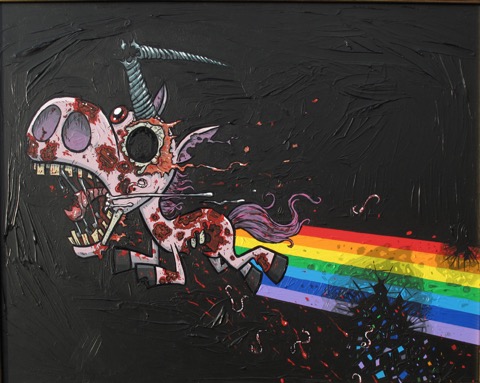
But at the same time, we have a lot of very real concerns. We’ve been told to carefully manage student illness in our classrooms, to help avoid pandemics associated with swine flu. But what I’m really worried about are zombies (unicorn zombie image below from my favorite local artist Joe Havasy) - if you read this paper you’ll see that we could be in very bad trouble indeed if zombies attack!

Concorde Fallacy
30/07/09 15:50
It is remarkable how many times the Concorde fallacy is invoked in this job. A lot of work sometimes goes toward projects that you suddenly recognize need to have the plug pulled. Today was the second time in the last year I’ve gotten within two weeks of a proposal deadline and my collaborators and I realized we just didn’t have it all together. Still, some good ideas for collaborative papers emerged from the ashes so it isn’t really “sunk costs”!
The lab is slowly pulling itself back together after our major summer cleaning. It appears that our PCR contamination problem may be associated with the live cultures of crustaceans in the room; at least, whatever it is appears to be airborne contaminant, because we can set up reactions across the hall with the same reagents and pipettors and the reactions are clean. Very strange.
One of many reasons the lab seems so quiet this week is that our summer SUNFIG student, Jesyka Meléndez, has headed home. Despite all the turmoil of the summer, she managed to take a project from basically ground zero all the way up to finding some interesting results about genetic diversity in small populations of the snail Melampus bidentatus on the Georgia coast. When one can go from no research experience to a significant p-value and showing that a species behaves as a metapopulation in less than six weeks, I’d say that person has great potential as a researcher - thanks for your hard work, Jesyka!
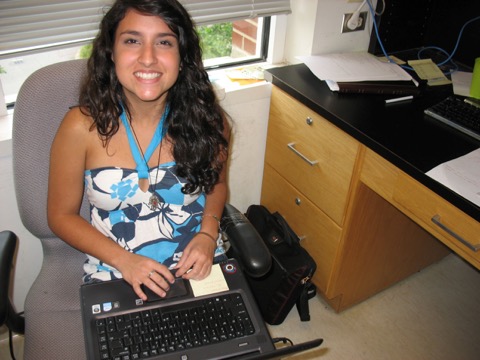
The lab is slowly pulling itself back together after our major summer cleaning. It appears that our PCR contamination problem may be associated with the live cultures of crustaceans in the room; at least, whatever it is appears to be airborne contaminant, because we can set up reactions across the hall with the same reagents and pipettors and the reactions are clean. Very strange.
One of many reasons the lab seems so quiet this week is that our summer SUNFIG student, Jesyka Meléndez, has headed home. Despite all the turmoil of the summer, she managed to take a project from basically ground zero all the way up to finding some interesting results about genetic diversity in small populations of the snail Melampus bidentatus on the Georgia coast. When one can go from no research experience to a significant p-value and showing that a species behaves as a metapopulation in less than six weeks, I’d say that person has great potential as a researcher - thanks for your hard work, Jesyka!

Fecundity, Part 2
19/07/09 14:53
We can now congratulate Tina Bell on being the second lab member in as many months (it felt like weeks) to successfully defend her Ph.D. She will be doing a postdoc with my (better looking) doppelganger Erik Sotka at College of Charleston, great work Tina!
It has been a hectic past 2 months, obviously, made more hectic by a lab contamination problem that really stymied me. A series of bands, looking almost like a ladder, up to about 300bp that affected all of our mitochondrial COI reactions. We replaced reagents, we tried filter tips, we tried changing reaction conditions, all sorts of things. In the end, it looks like sloppy pipetting put something in our pipettors that is able to aerosolize into reactions. What that “something” is that isn’t exactly COI but responds to those primers, I don’t know. In the meantime, I’ve shut the lab down for a well-needed cleaning and overhaul, including using DNAZap on all items used in PCR, getting rid of lots of junk (apologies to the cleaning staff for all of the very full trash cans, and no most of it could not be recycled - what could be passed along to other labs was, however), and so on. We’ll be a little leaner and meaner now; with fewer students perhaps I’ll sleep a little better at night, too.
Speaking of the conservation side of the lab (the recycling, not the getting rid of students), I’d previously detailed (on my pirate-hacked wiki that I had to shut down) the work we’ve done in the lab to cut down on energy use, and as of late May 2009 our efforts had cut our kWh usage by plug-in gizmos by well over 10%. With the recent overhaul of the lab (and reduced population size), I’ve decommissioned another older G4 (though that was thanks to getting a new Mac Pro, so no net savings) and we’re replacing a 9-year-old Dell Workstation with the Mac Mini for gel doc and Nanodrop runs. That should cut the power consumption in half for that computer station, though I doubt it will dramatically improve my Hirsch-Index-per-kWh numbers!
It has been a hectic past 2 months, obviously, made more hectic by a lab contamination problem that really stymied me. A series of bands, looking almost like a ladder, up to about 300bp that affected all of our mitochondrial COI reactions. We replaced reagents, we tried filter tips, we tried changing reaction conditions, all sorts of things. In the end, it looks like sloppy pipetting put something in our pipettors that is able to aerosolize into reactions. What that “something” is that isn’t exactly COI but responds to those primers, I don’t know. In the meantime, I’ve shut the lab down for a well-needed cleaning and overhaul, including using DNAZap on all items used in PCR, getting rid of lots of junk (apologies to the cleaning staff for all of the very full trash cans, and no most of it could not be recycled - what could be passed along to other labs was, however), and so on. We’ll be a little leaner and meaner now; with fewer students perhaps I’ll sleep a little better at night, too.
Speaking of the conservation side of the lab (the recycling, not the getting rid of students), I’d previously detailed (on my pirate-hacked wiki that I had to shut down) the work we’ve done in the lab to cut down on energy use, and as of late May 2009 our efforts had cut our kWh usage by plug-in gizmos by well over 10%. With the recent overhaul of the lab (and reduced population size), I’ve decommissioned another older G4 (though that was thanks to getting a new Mac Pro, so no net savings) and we’re replacing a 9-year-old Dell Workstation with the Mac Mini for gel doc and Nanodrop runs. That should cut the power consumption in half for that computer station, though I doubt it will dramatically improve my Hirsch-Index-per-kWh numbers!
Fecundity
01/07/09 08:29
It looks like the Wares Lab has finished up its first Ph.D. - Scott Small defended his dissertation last week! We’ve got a few revisions left, but congratulations to Scott - he did a fantastic job over the last few years and I’m looking forward to the 10 papers we’ll get out of this dissertation!
